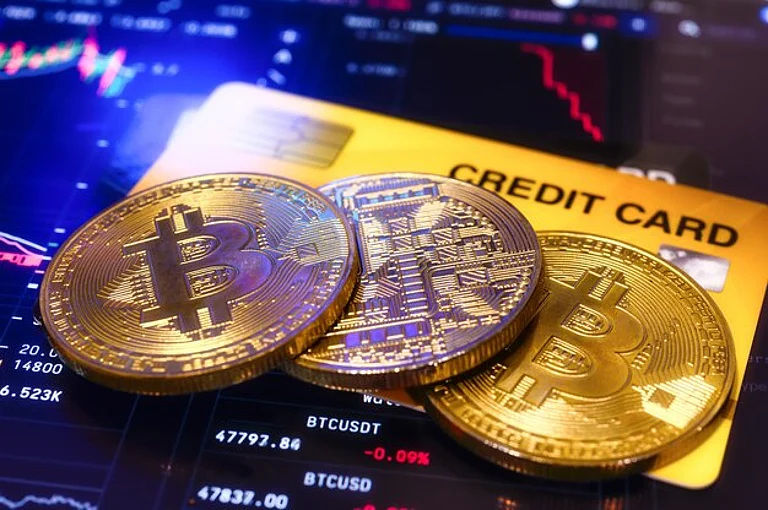In the world of cryptocurrency, wallet addresses play a central role in how investors track their holdings, evaluate performance, and maintain transparency across multiple accounts. Accurate portfolio tracking is impossible without correct wallet address mapping because these addresses serve as the identifiers of where assets are stored and how they move on-chain. Whether you are a beginner or an advanced crypto user, understanding why wallet addresses matter is essential for managing risk, analyzing market behavior, and calculating long-term returns. This article explores how wallet addresses directly influence accurate portfolio tracking, why they act as the backbone of monitoring digital assets, and how they help investors maintain clarity across a rapidly evolving ecosystem.
What Are Wallet Addresses and How Do They Work?
A wallet address is a unique alphanumeric string that represents a location on a blockchain where digital assets can be stored, sent, or received. Think of it as a bank account number—but on a decentralized network.
1.1 Key Characteristics of Wallet Addresses
Unique identifiers: No two addresses on the same chain are identical.
Public-facing: Designed to be shared for receiving funds.
Chain-specific: A Bitcoin address cannot be used on Ethereum, and vice versa.
Permanent or disposable: Some users reuse addresses, while others generate new ones for privacy.
1.2 Why Wallet Addresses Form the Basis of Tracking
Because blockchain transactions are public and transparent, portfolio tools rely on wallet addresses to scan the blockchain and fetch:
Balances
Transaction history
Token movements
Staking rewards
NFTs and assets on supported chains
Without the correct wallet address, these tools cannot read the data, leading to incomplete or incorrect portfolio views.
2. Why Wallet Addresses Matter for Accurate Portfolio Tracking
Accurate portfolio tracking depends on real-time, verifiable data. Wallet addresses are the direct source of this data since every transaction is permanently recorded on the blockchain.
2.1 Eliminates Manual Entry Errors
Manually entering transactions across multiple exchanges and wallets is:
Time-consuming
Error-prone
Difficult to reconcile
Unsuitable for active traders
When correct wallet addresses are added to a tracking platform, the system automatically pulls data, reducing human error.
2.2 Enables Real-Time Valuation Across Chains
Modern crypto portfolios often include:
Layer-1 assets (BTC, ETH, SOL)
Layer-2 tokens
DeFi assets
NFTs
Liquidity pool positions
Staked tokens
Wallet addresses allow tracking tools to fetch live values across chains, which is essential for monitoring:
Unrealized profits
Diversification
Risk exposure
2.3 Supports Better Tax Reporting
Tax authorities treat crypto as an asset class requiring detailed reporting of:
Cost basis
Capital gains
Staking income
DeFi rewards
Wallet addresses act as data sources that help reconstruct transaction timelines. Midway through the process, accurate tracking also helps users monitor crypto gains, ensuring tax filings are precise and defensible.
2.4 Improves DeFi Transparency
DeFi activities can include:
Liquidity provision
Borrowing
Yield farming
DAO participation
On-chain governance
Each of these creates multiple transactions. Without wallet address monitoring, users often lose track of:
Rewards
Fees
Token migrations
Contract interactions
Wallet address tracking solves this by providing an unbroken on-chain record.
2.5 Helps Prevent Portfolio Blind Spots
Blind spots occur when you:
Forget you created a secondary wallet
Use multiple exchanges and lose visibility
Hold long-term assets in cold storage
Participate in ICOs/airdrops using different addresses
By compiling all wallet addresses, users get an accurate 360° view of their entire portfolio.
3. Common Issues Caused by Incorrect or Missing Wallet Addresses
Even a single missing address can distort overall tracking.
3.1 Inaccurate Net Worth
Missing assets mean inflated or deflated valuations.
3.2 Wrong Profit/Loss Calculations
If buy transactions aren't matched with sells, ROI appears incorrect.
3.3 Misaligned Tax Reporting
Incorrect cost basis may trigger:
Overpayment
Underpayment (which may lead to penalties)
3.4 Incomplete Transaction History
This is common for users active in NFT mints, bridging, or staking.
3.5 Missed Airdrops
Some airdrops verify eligibility by analyzing wallet activity.
4. Types of Wallet Addresses Used for Tracking
Wallet Type | Description | Tracking Complexity |
Hot Wallets (MetaMask Phantom) | Connected to apps used for daily transactions | Easy |
Cold Wallets (Ledger Trezor) | Offline storage for long-term holdings | Moderate |
Exchange Wallets | Wallets controlled by CEX platforms | Low |
Multi-Sig Wallets | Require multiple approvals | Moderate–High |
5. Steps to Ensure Accurate Portfolio Tracking Using Wallet Addresses
Step-by-Step Checklist
Identify all your wallets: Hot, cold, mobile, multi-sig, and exchange-based.
List all blockchains you use: Ethereum, BNB Chain, Solana, Bitcoin, Polygon, Avalanche, etc.
Add each address to your tracking platform: Ensure chain compatibility.
Verify the balances shown: Confirm using official blockchain explorers.
Match historical transactions: Especially for older wallets.
Integrate exchange API keys: Completes tracking for CEX assets.
Update regularly: Add new wallets created during airdrops, mints, or trading.
6. Why Portfolio Tools Depend on Wallet Addresses
Portfolio platforms depend on public blockchain infrastructure. They read data through:
Blockchain explorers
Node connections
APIs
DeFi indexing protocols
Without wallet addresses, these systems have no reference point to fetch user-specific data.
7. Wallet Addresses and Multi-Chain Portfolios
Today, users often operate across multiple chains. Every chain introduces new addresses.
Examples:
ETH: Starts with “0x”
BTC: Starts with “1”, “3”, or “bc1”
SOL: Completely different character sets
This diversity makes wallet address tracking crucial for:
Avoiding lost tokens
Monitoring bridges
Watching wrapped assets
Tracking staking rewards across networks
8. Privacy and Security Considerations
Although wallet addresses are public, users should still maintain security best practices.
8.1 Pros
Transparency
Easy verification
Trustless audit
8.2 Cons
Addresses reveal transaction patterns
Linking addresses to identity reduces privacy
Tip: Use separate addresses for sensitive transactions if privacy matters.
9. Importance of Cross-Platform Consistency
If you store crypto in multiple places:
Exchanges
Wallet apps
Hardware wallets
DeFi platforms
…then adding all addresses ensures unified reporting and reduces discrepancies in:
Total holdings
Asset location
Exposure to high-risk tokens
Conclusion
Wallet addresses are the foundation of accurate crypto portfolio tracking. They allow tools to read real-time on-chain data, eliminate manual errors, ensure proper tax reporting, and help users maintain visibility across multiple chains and platforms. As crypto adoption grows and portfolios become more diversified, understanding and managing wallet addresses becomes increasingly essential. By maintaining organized records of all your wallet addresses, you ensure your crypto investments remain transparent, traceable, and aligned with your financial goals.
FAQs (Inspired by “People Also Ask”)
1. How do I track my crypto portfolio using a wallet address?
Use any portfolio tracker (e.g., Zerion, DeBank, Zapper, CoinStats) and add your public wallet addresses. The tool will automatically scan the blockchain to show balances and transactions.
2. Can someone steal my crypto using my wallet address?
No. A wallet address is safe to share. Only your private key or seed phrase can give access to your funds.
3. Why is my portfolio value wrong?
Possible reasons include:
Missing wallet addresses
Incorrect chain selection
Outdated exchange data
Unsupported tokens
4. Are wallet addresses the same for every blockchain?
No. Each blockchain has its own address format. Always verify before transferring.
5. Do I need separate tracking for NFTs?
Yes, NFTs also live on wallet addresses. Adding your wallet automatically fetches your NFT collection.
6. What if I lose track of an old wallet address?
Search transaction history in old exchanges or apps you used. Some explorers let you browse tokens by wallet name or ENS.
7. Why do DeFi users need multiple wallet addresses?
For privacy, risk diversification, and separating investment strategies.
























